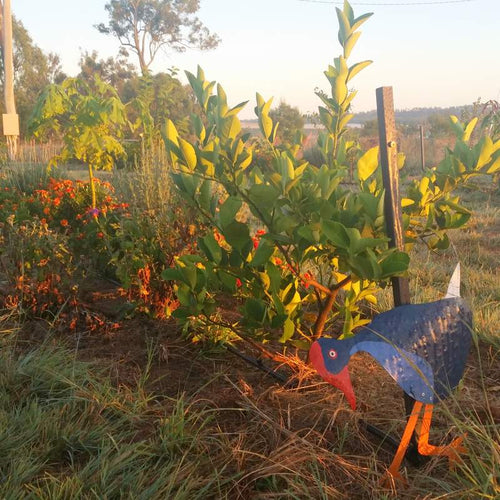How I use herbs - parsley
If I was to encourage you to grow just one herb, whether you have a large garden or only a small balcony, without a doubt it would be parsley (Pertroselinum crispum). Parsley is incredibly easy to grow and propagate, it goes with nearly every meal and has a number of important medicinal properties.
How to grow parsley
Depending on your climate parsley may be an annual or biennial (mine is annual in the sub-tropics, it seeds and dies off in the heat of summer). I can't actually remember where the parsley in my garden first came from originally. I think I bought a small plant about seven years ago and planted it in the garden. That small plant grew into a large plant, flowered and set seed. And ever since then, parsley has popped up in my garden whenever I need it. I took a couple of plants when we moved house, and the cycle continues. I do save some seeds from the plants, but I usually just sprinkle them all around the garden, and weed out any extra plants that grow. I never intentionally plant parsley!
If you do start from seed, be aware that it can take up to six weeks for the seed to germinate. If you're impatient, then I recommend buying one small plant and allowing it to produce seed.
There are two main types of parsley (apparently there are also many varieties within those two types): curly leaf and flat leaf. I currently grow the flat leaf type, which is supposed to be hardier. I did have a curly leaf plant at one stage, but it never went to seed and eventually died off. And now its the flat leaf that survives and proliferates in my garden today, with very little encouragement from me!
The parsley flowers are not only beautiful, they are also a feed source for beneficial insects in the garden.
How I use parsley
Do you grow and use parsley? Any tips? Which herb would you recommend if you had to choose just one?
| parsley flowers |
How to grow parsley
Depending on your climate parsley may be an annual or biennial (mine is annual in the sub-tropics, it seeds and dies off in the heat of summer). I can't actually remember where the parsley in my garden first came from originally. I think I bought a small plant about seven years ago and planted it in the garden. That small plant grew into a large plant, flowered and set seed. And ever since then, parsley has popped up in my garden whenever I need it. I took a couple of plants when we moved house, and the cycle continues. I do save some seeds from the plants, but I usually just sprinkle them all around the garden, and weed out any extra plants that grow. I never intentionally plant parsley!
If you do start from seed, be aware that it can take up to six weeks for the seed to germinate. If you're impatient, then I recommend buying one small plant and allowing it to produce seed.
There are two main types of parsley (apparently there are also many varieties within those two types): curly leaf and flat leaf. I currently grow the flat leaf type, which is supposed to be hardier. I did have a curly leaf plant at one stage, but it never went to seed and eventually died off. And now its the flat leaf that survives and proliferates in my garden today, with very little encouragement from me!
The parsley flowers are not only beautiful, they are also a feed source for beneficial insects in the garden.
How I use parsley
For a start, parsley is high in vitamins A, C and E, and in iron, which are all good reasons to eat it. Parsley has anti-inflammatory and antioxidant properties. It is a diuretic (stimulates urination) and settles an upset stomach.
NOTE: parsley should not be used in large quantities during pregnancy as it is a uterine stimulant (and is also known to be helpful for period pain).
Parsley has a pleasant fresh taste. I like to add it to casseroles, soups and salads just prior to serving (it doesn't need to cook for long). I also use handfuls of it in stock, and in dips and salad dressings. I love parsley with scrambled eggs. It would be a good herb to add to juices or green smoothies. There are plenty of opportunities to use parsley, I use it nearly every day.
You can also grow a different variety of parsley and use the root as a vegetable.
If you end up with excess parsley, you can preserve it by drying it. I haven't had any success using my dehydrator, but this winter, I found that if I left parsley in a colander for a couple of weeks and it dried slowly, while retaining its green colour. I was then able to crumble the leaves into a small jar to use later. Even though I do usually have some parsley in the garden, during a hot dry summer, there isn't always an abundance, so it will be handy to have some dried parsley to use as well. The other option is persillade, which is a mixture of parsley and oil, I made this for the first time this year.
Do you grow and use parsley? Any tips? Which herb would you recommend if you had to choose just one?























Leave a comment